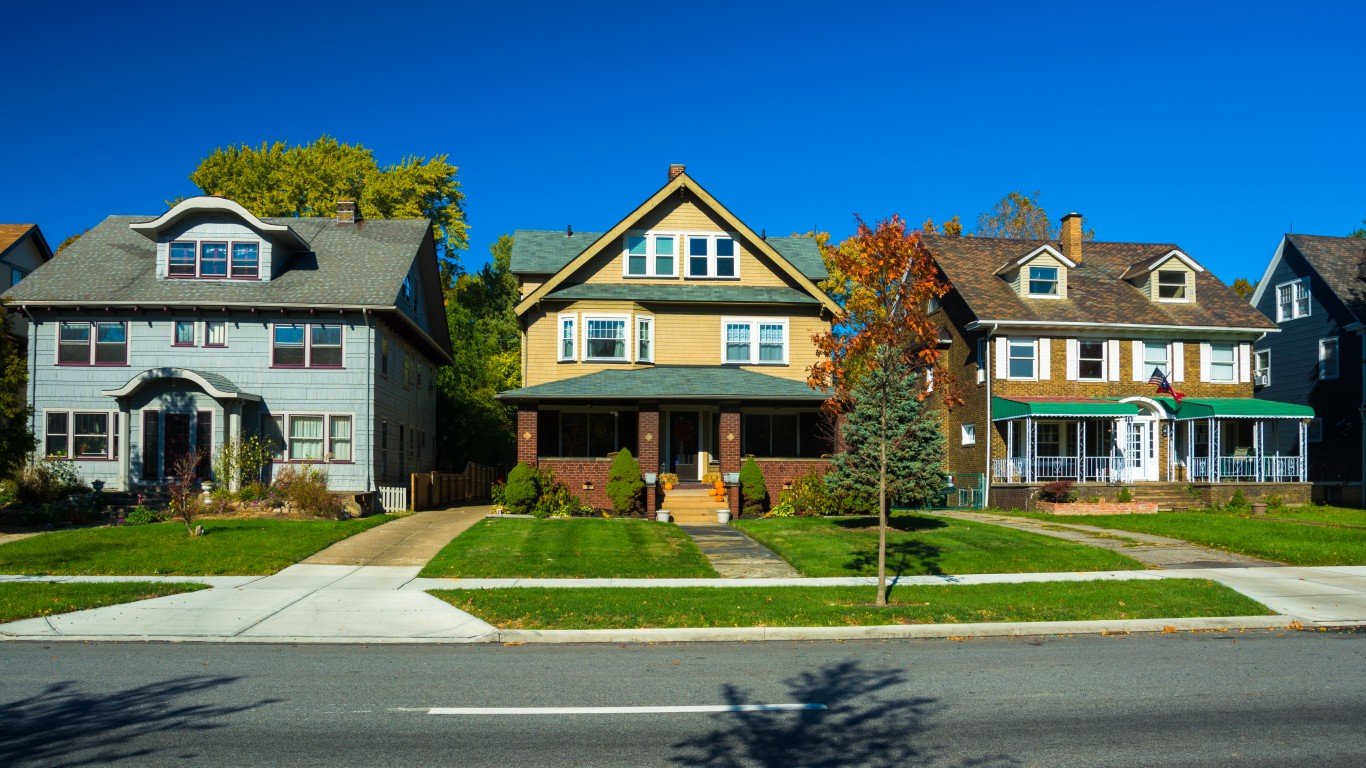

Housing prices in the United States have doubled in most American cities over the past two decades. In some cases, they have nearly tripled. However, in one city, the price of an average home has fallen since 2000.
S&P CoreLogic Case-Shiller posts among the most carefully followed home price data in the country. Once a month, it issues a report on home prices nationwide in the 10 largest and 20 largest cities. For October, data showed that the rapid rise in home prices across the nation continued to increase and were up by 1.4% compared to September. Craig J. Lazzara, Managing Director and Global Head of Index Investment Strategy at S&P Dow Jones Indices, commented: “The housing market’s strength was once again broadly-based: all 19 cities for which we have October data rose, and all 19 gained more in the 12 months ended in October than they had gained in the 12 months ended in September.”
The indexes for the nation and each city are based on a value of 100 in 2000. A current index of 200 means that the value of the home in that area has doubled over the 20-year period.
Several cities have posted home price gains that well more than doubled. The three cities that have gained the most are in California. The current index for Los Angeles stands at 312.49. For San Diego, the comparable figure stands at 292.85, and the San Francisco figure is 286.45.
The city with the smallest increase is Cleveland, which has a current index of 139.83. S&P CoreLogic Case-Shiller does not make adjustments for the cost of living. On that basis, the price of a home in Cleveland has fallen.
According to The American Institute of Economic Research Cost of Living Calculator, the figure has risen from $100.00 to $150.21. Calculated on that basis, the cost of a home in Cleveland has dropped.
Home prices in Cleveland may have dropped for several reasons. Its population, which began to drop sharply in 1970, fell from 478,403 in 2000 to 381,009 last year, according to U.S. Census figures. Nearly 33% of the population lives below the poverty line. Median household income is only $30,907, less than half the national average.
Cleveland shares many problems that America’s other Rust Belt cities do. Several, including Detroit, Pittsburgh and Buffalo, have lost significant portions of their population in the past 70 years. In most cases, the residents left are poor, undereducated and below the poverty line. The demand for housing, unless it is inexpensive, is small. Each also has large numbers of unoccupied houses.
Home prices in Cleveland have not risen at the rate of inflation for the past two decades. Based on its current demographics, that will not change.
This is the worst American city to live in.
Thank you for reading! Have some feedback for us?
Contact the 24/7 Wall St. editorial team.
 24/7 Wall St.
24/7 Wall St.

